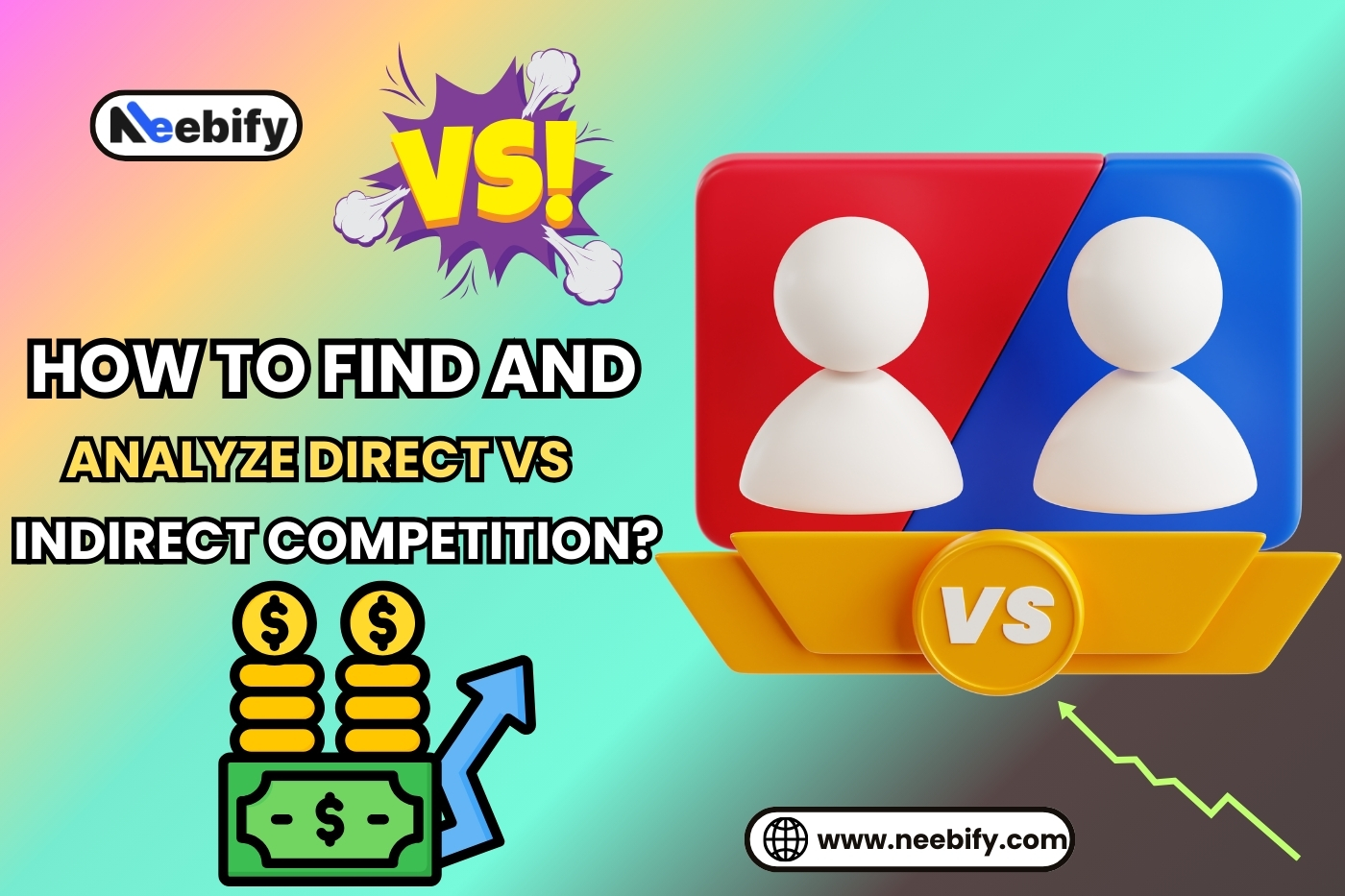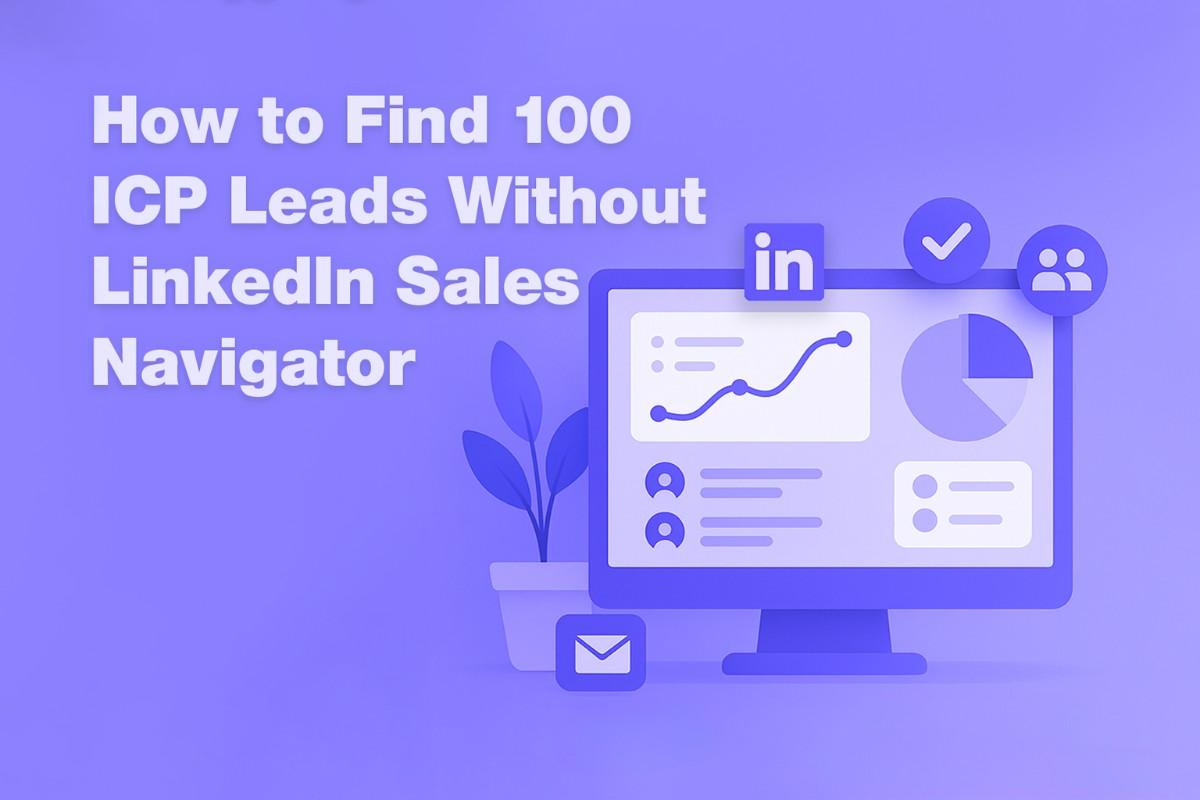Table of content
How to Find and Analyze Direct vs Indirect Competition?
When starting or growing a business, knowing your competition is crucial to staying ahead. Be it in a saturated market or niche space, knowing who your competitors are, what they are doing, and how you can outperform them is important. Finding Business competitors and analyzing direct vs indirect competition helps businesses refine their strategies, improve their products or services, and identify new opportunities for growth.
In this article, we discuss the difference between direct and indirect competitors, provide examples of each, and show you effective ways to identify and analyze them. In addition, we'll also discuss competitor analysis tools and strategies that will help you gain valuable insights into your market.
What is Direct Competition?
Direct competition is where there are businesses selling the same or very similar products or services in the same market segment or industry. In other words, these competitors are going after the same customers to fulfill the same needs. Using the coffee shop as an example, others operating local coffee shops within your area would be your direct competitors.
In the realm of direct competition vs indirect competition marketing, the focus is made on businesses that directly oppose each other in the marketplace. If a potential customer has a choice between your product and that of another, then the competition is considered direct.
Examples of Direct Competitors
1. Retail Clothing Stores: If you have a casual clothing retail store, your examples of direct competitors would be other local clothing retailers or national chains like H&M or Zara.
2. E-commerce Websites: If you are running an online store selling smartphones, direct competitors would be brands like Apple, Samsung, or other resellers of smartphones.
3. Restaurants and Cafes: A restaurant serving Italian food would identify other Italian restaurants or pizza shops as its direct competitors in business.
Knowing your direct competitors is crucial because they have a direct impact on your market share and profitability. Through an analysis of your direct competitors, you can find out about their pricing, marketing, customer service, and products.
What is an Indirect Competitor?
An indirect competitor sells products or services that are not identical to yours but could fill the same need or solve the same problem for the same target market. They might not have the same solution, but they have an alternative solution. Indirect business competition is sometimes overlooked and, in some cases, often more important to know than that of direct competition.
For example, a firm selling healthy meal delivery will have indirect competition from others selling convenience foods, meal kits, or even supermarkets selling fresh ingredients.
Some Examples of Indirect Competitors
1. Meal Delivery Services vs Fast Food Chains: A meal prep company may not compete with fast food chains, but both serve people in need of a quick meal, which makes fast food an indirect competitor.
2. Streaming Platforms vs Cable TV: If you run a subscription-based streaming platform, companies like Netflix or Hulu could be indirect competitors to cable television providers, as both offer entertainment services.
3. Electric Vehicles vs Traditional Gas Cars: If your company sells electric vehicles, traditional gas-powered car brands like Ford or Toyota could be considered indirect competitors in business because they fulfill the same basic need of transportation.
Knowing how to identify indirect competition is a vital part of doing a comprehensive market analysis. Though these businesses do not offer the same product or service, they are still fighting for the same customer base.
6 Ways to Identify Your Direct and Indirect Competitors
Knowing how to identify your direct and indirect competitors can be the difference-maker in the market. Here are six effective strategies to help you recognize both:
1. Conduct Market Research: The most basic and important strategy for finding business competitors is market research. This involves gathering information about your industry, identifying major players, and analyzing customer needs and preferences. Market research can help you see who else is offering solutions similar to yours, both directly and indirectly.
2. Online Search Behavior: Analyze how to research competitors online. Through the use of search engines, keyword analysis tools, and social media monitoring, you can identify companies targeting similar keywords and customer segments. Through researching search terms related to your product or service, you can identify both direct competitors examples and businesses targeting your potential customers with different solutions.
3. Customer Feedback and Surveys: If you do not know who your competitors are, ask your customers. Customer surveys or feedback forms may provide valuable insight into which other businesses your customers are considering before choosing your product. It will give you a clear idea of how to identify indirect competition and can be helpful in analyzing competitors from a customer's perspective.
4. Competitor Analysis Tools: There are a number of competitor analysis tools available online that can help you identify and analyze your competition. SEMrush, Ahrefs, and SpyFu are tools that allow you to track your competitors' digital presence, including their keywords, backlink profiles, and content strategies. Using these indirect competition analysis tools, you can identify businesses that are targeting similar customer bases, even if they aren't offering the same exact products.
5. Track Social Media and Online Reviews: Social media is a good source to find out the competitors. You can track hashtags, keywords, and online discussions related to your industry to find out both direct and Indirect competitors. Customer reviews on Yelp, Google Reviews, and Trust-pilot give you an idea of what customers like and dislike about your competitors' offerings.
6. Industry Reports and Competitor Research Databases: Industry-specific reports, publications, and competitor research databases are the best sources of understanding market competition. The reports usually indicate the key players in your industry and identify both direct and indirect competition. Getting access to these reports can help you have an upper hand when analyzing market competition and identifying new players in your field.
What is the Best Way to Analyze Your Competitors?
Once you have identified both your direct and indirect competitors, the next step is to analyze your competitors to better understand their strategies and performance. Here's a step-by-step process for how to analyze competitors effectively:
1. Assess Their Digital Presence: You should review your competitors' websites and social media platforms. Look at the user experience, design, and content they have. Check out their blog posts, videos, or customer engagement. This will give you insight into their competitive analysis strategies and where they are excelling or failing.
2. Research Their Product and Service Line: Identify what your competitors sell and how their products and services are marketed. Are they premium, budget-friendly, or a value line? How do their products compare to yours? Market competition analysis also means identifying the product features that you may be missing out on, which may be vital in differentiating your own offering.
3. View Their Pricing Strategy: One of the massive parts of direct competition vs indirect competition marketing is the pricing. Analyze the pricing of your competitors and your business as well and determine how you are placed in the market. Do they offer discount rates, packages, or even special deals? Knowing the prices will determine if you're undercharging, overcharging, or fair in comparison.
4. Analysis of Their Customer Base: Who are your competitors targeting? Are they focusing on a targeted customer group or a very broad market? Use tools of analytics and competitor research to analyze their customer base. How to assess competition in your industry also involves seeing how your competitors interact with their customers, including how they use loyalty programs, e-mail marketing, and even social media promotions.
5. Track Their Advertising and Marketing Tactics: Pay attention to how your competitors are running advertising campaigns. Where do they place their ads? Through which mediums, like social media, search engines, and so on? What messaging? How do they position their brand? By understanding how your competition approaches competitive strategies analysis and direct competition vs indirect competition marketing, you gain insight into how you may be able to do things better.
6. Follow Their Growth Curve: There are tools you can use to track competitors over time. Is your competitor adding or losing customers? How's their growth rate? All of this information helps you assess the success levels of competitors and what might be trends to follow.
Conclusion
Knowing how to find and analyze direct vs indirect competition can mean the difference between keeping your business ahead of your industry and watching it fumble into oblivion. Your direct competitors may offer the same or very similar products, but your indirect competitors offer alternative solutions that could satisfy the needs of your customers. Thus, by utilizing competitor analysis tools, monitoring their activities, and keeping up with trends, you can strategically position your business to outperform these types of competition.
By following the steps outlined here, you’ll be able to create a strong competitive advantage, adjust your business strategy when necessary, and improve your overall market position. Whether you’re just starting out or are looking to refine your existing business strategy, how to analyze competitors and understanding market competition will ensure that your business remains competitive and adaptable in an ever-changing market landscape.
Get your next meeting in a
matter of minutes.
Free Trial
Latest
The Ultimate LinkedIn Outreach Playbook 2025
A practical, modern guide to mastering LinkedIn outreach in 2025 — learn how to boost reply rates, p
12/1/2025How to Find 100 ICP Leads Without LinkedIn Sales Navigator
Generating 100 targeted ICP leads doesn’t require LinkedIn Sales Navigator. Learn how to leverage fr
11/28/2025


